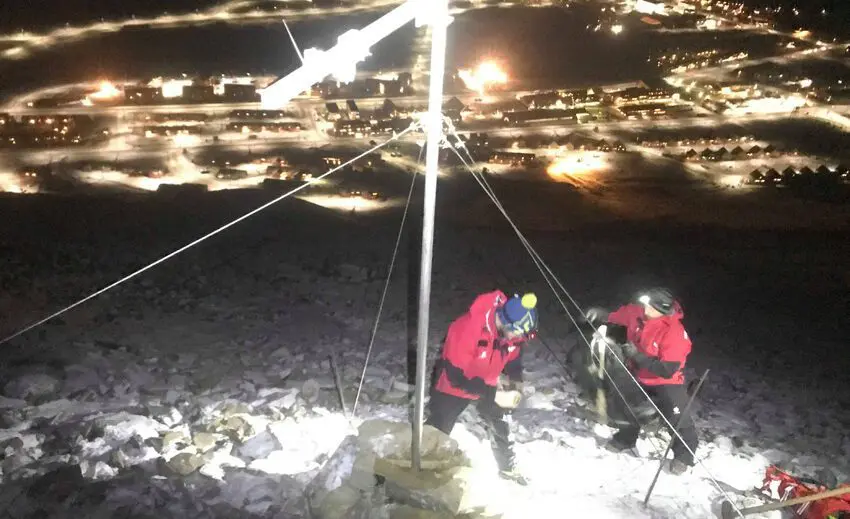Better avalanche warnings in and around Longyearbyen

Top image: The first Driva snow sensor was installed on Sukkertoppen in January 2019. Photo: Sara Mollie Cohen/UNIS.
UNIS, in collaboration with Telenor Svalbard, has launched a pilot project to improve avalanche warnings in and around Longyearbyen.
12 February 2019
This winter, UNIS in collaboration with Telenor Svalbard has installed a new, smart snow sensor on Sukkertoppen, the mountain above Longyearbyen. It was from Sukkertoppen the fatal avalanche killing two people occurred in December 2015. There was also another avalanche from this mountain in February 2017, luckily not a fatal one, but causing considerable building damage.
Over several years, UNIS has been cooperating with Telenor Svalbard on measuring snow drift and avalanche risk. The result may contribute to a better, more factual overview of snow drifts in areas that could present dangers.
New technology
The snow sensor now deployed on Sukkertoppen has Telenor’s Narrowband Internet of Things Technology (NB-IoT) installed. This provides completely new opportunities for measuring and sending data on temperature and snow depths continuously, so that the authorities get a better basis for assessing the avalanche risk. The sensor measures snow depth, temperature and humidity.
– Many factors play a role in assessing the risk for avalanches, including weather conditions, snow depths and temperatures. We want to have as much information as possible available to make good decisions. These sensors will help to create a better overall picture of the avalanche danger, says Martin Indreiten, section manager for operations and field safety at UNIS and leader of the UNIS avalanche observers.
Throughout this winter, two more snow sensors will be deployed in the slopes around Longyearbyen and four along “Lillerunden”, a popular snowmobile track in the vicinity of Longyearbyen. This will contribute to safer snowmobile traffic because one can get indications of increased avalanche risk in selected avalanche paths. This enables the public to make better decisions regarding traffic in the area. At the same time, it becomes an important contributor to a better regional avalanche warning by obtaining verified information about the snow cover in the inner area of Nordenskiöld Land.
The Driva project is financed by UNIS and Telenor, in addition to a NOK 100 000 project donation by the Arctic Safety Centre.
